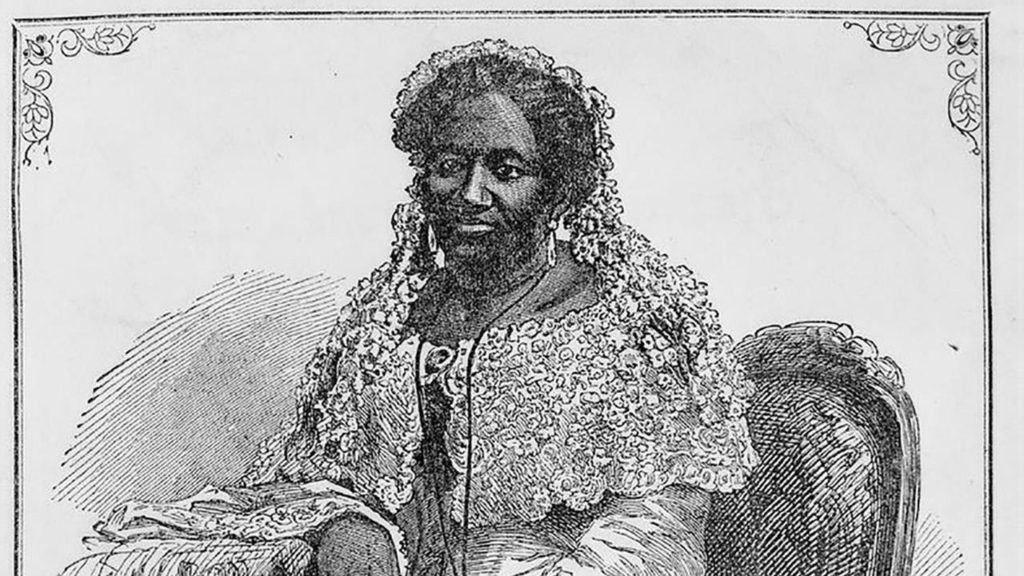
SEPT 15 2017
Join us forThird Rail With OZY, a terrific new TV show presented by OZY and WGBH, to debate provocative hot topics with experts and celebrities every Friday night. The subject of this week’s show — “Is America Becoming More or Less Racist?” Tune in Friday at 8:30/7:30c on PBS, or online, and be sure to weigh in on social media (#ThirdRailPBS) and/or email us at thirdrail@ozy.com with your take! Missed last week’s show? Tune in here.
They called her the Black Swan. It was the autumn of 1851, and Elizabeth Taylor Greenfield, the first Black woman to capture America’s public imagination with her devastating musical talent, was about to become a star.
Styling herself after soprano Jenny Lind, the “Swedish Nightingale,” Greenfield spent the early 1850s touring concert halls throughout the northern United States, and the reviews of her performance were startling: She was, for many critics, a challenge to racist ideas that had become ingrained in American culture. And while Greenfield lived in a dramatically different America than nonwhite musical sensations of today, she was confronted by many of the same expectations and prejudices.
At the time of her first public concert, in Buffalo, New York, that fall, Greenfield was 34 — or 25, or 23. We’ll never know, because like many people born into slavery, there are few records of her early life, including her date of birth. She was raised in Philadelphia, named after Elizabeth H. Greenfield, who freed all her slaves and sent many, including the young singer’s mother, Anna, to Liberia. But Elizabeth, a budding musical talent, remained in Philadelphia, where she was educated and taught to play the piano. Her former mistress became her guardian until she died, and a dispute over the inheritance left the young Black woman penniless. To make ends meet, she established herself as a music teacher and, later, as a solo artist.
WHILE A FEW QUESTIONED HER HERITAGE, MANY EMBRACED HER AS AN AMERICAN ALTERNATIVE TO EUROPEAN STAR JENNY LIND.
While there are no recordings of Greenfield singing, or even any writings by her own hand, reviews of her performances describe her as having a massive range and a “double voice” that rivaled those of the best and most popular singers of the day. “There’s no question that she had an incredible voice,” says Sara Lampert, a history professor at the University of South Dakota.
To start her concert career, Greenfield first had to drum up support from white society. Even as a free Black woman, she wouldn’t have been accepted in deeply racist 19th-century America. The passage of the 1850 Fugitive Slave Act, which required all escaped slaves who were captured to be returned to their owners, meant escaped slaves had to be ever watchful — and that lawfully freed former slaves had to be wary of slave catchers. Simply by touring, Greenfield put herself at great risk, says Lampert: “It’s never without risk to personal safety for an African-American woman to be traveling — the North is very segregated in this period, and a lot of violence can rise up around anything seen as abolitionist.”
Moreover, “scientific” racist views were very much in vogue: Some tried justifying racist societal rules by theorizing distinct biological differences between races, inferring that Blacks were not capable of living alongside whites.
But after Greenfield sang in a society living room in Buffalo — a performance covered by the local press — she was able to convince business owners, lawyers and doctors from around the community to support her bid for a concert career. On Oct. 22, 1851, people gathered at Buffalo’s Townsend Hall to hear her sing. African-Americans could attend, but seating was segregated, and some Black community leaders asked Greenfield to boycott the performance in protest. She went ahead, though, and sang the rafters down, and followed it up with a concert performance in Rochester, where the ticket price doubled.
There were, of course, other Black musicians — Black people were often stereotyped as being especially gifted at music (a stereotype that still exists), but unable to grasp artistry and training. Greenfield disproved that by singing the complex, semi-operatic repertoire popularized by white artists and by maintaining a genteel appearance distinctly at odds with racist representations of Black women common in minstrel shows at the time.
She then embarked on a two-year tour across Canada and the northern U.S., singing for crowds of 500 to 1,000 people and garnering rave reviews that — while shockingly racist by modern terms — showed Greenfield’s power to change ideas about African-Americans. A few questioned her heritage, but many embraced her as an American alternative to Jenny Lind. Greenfield’s fame served as an opportunity to combat racism by highlighting how training and education could lead Blacks to great success while also debunking the racist ideology that saw slavery as a fitting fate for African-Americans. Even her rave reviews, however, teemed with racist undertones. The writers who appreciated Greenfield’s voice often persisted with stereotypes, describing her musical talent with words they used to recount slave songs, like “natural, spiritual, powerful, pure and authentic,” writes Julia J. Chybowski in the Journal of the American Musicological Society.
But Greenfield persevered. She went on to tour England, becoming a sensation there and even singing for the queen. In later years, she returned to America and performed with abolitionists on the lecture circuit, advancing anti-racist politics in the mid-1860s. She died in 1876, in Philadelphia, but continued inspiring generations of African-American singers. While her voice is lost forever, Greenfield’s early efforts to assert humanity in the face of racism will never be silenced.

